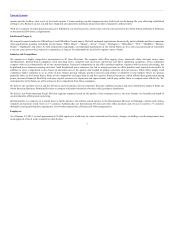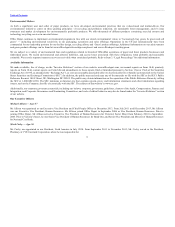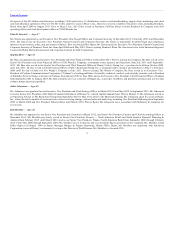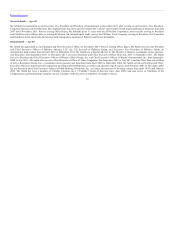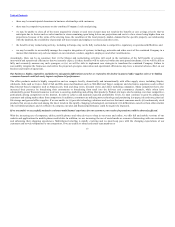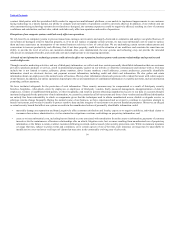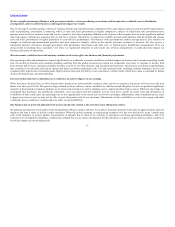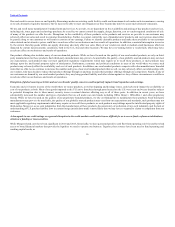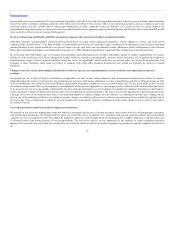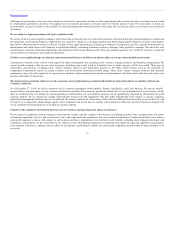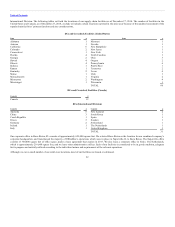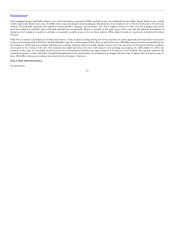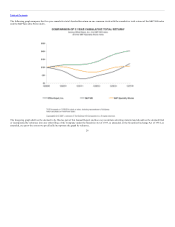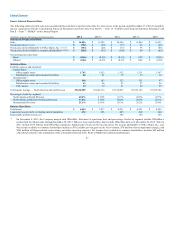OfficeMax 2014 Annual Report Download - page 19
Download and view the complete annual report
Please find page 19 of the 2014 OfficeMax annual report below. You can navigate through the pages in the report by either clicking on the pages listed below, or by using the keyword search tool below to find specific information within the annual report.
Table of Contents
well as invest in business expansion through new store openings, capital improvements and acquisitions. A deterioration in our financial results or the impact
of significant Merger and integration costs could negatively impact our credit ratings, our liquidity and our access to the capital markets. If we need to
refinance all or a portion of that indebtedness, there is no assurance that we will be able to secure such refinancing at the same or more favorable terms than
the terms of our existing indebtedness.
Our asset based credit facility contains a fixed charge coverage ratio covenant that is operative only when borrowing availability is below $125 million or
prior to a restricted transaction, such as incurring additional indebtedness, acquisitions, dispositions, dividends, or share repurchases. The agreement
governing our credit facility (the “Credit Agreement”) also contains representations, warranties, affirmative and negative covenants, and default provisions. A
breach of any of these covenants could result in a default under our Credit Agreement. Upon the occurrence of an event of default under our Credit
Agreement, the lenders could elect to declare all amounts outstanding to be immediately due and payable and terminate all commitments to extend further
credit. If the lenders were to accelerate the repayment of borrowings, we may not have sufficient assets to repay our asset based credit facility and our other
indebtedness. Also, should there be an event of default, or a need to obtain waivers following an event of default, we may be subject to higher borrowing
costs and/or more restrictive covenants in future periods. Acceleration of our obligations under our credit facilities would permit the holders of our other
material debt to accelerate their obligations.
In recent years, we recognized significant non-cash asset impairment charges related to under-performing stores in North America. These charges reflect
greater than anticipated downturns in sales at certain lower performing stores and in some cases, early closures associated with the Real Estate Strategy. We
regularly assess past performance and make estimates and projections of future performance at an individual store level. Reduced sales, our shift in strategy to
be less promotional, as well as competitive factors and changes in consumer spending habits resulted in a downward adjustment of anticipated future cash
flows for the individual stores that resulted in the impairment. We foresee challenges in the market and economy that could adversely impact our operations.
To the extent that forward-looking sales and operating assumptions are not achieved and are subsequently reduced, or if we commit to a more aggressive
store downsizing strategy, including allocating capital to further modify store formats, additional impairment charges may result. We have also recognized
non-cash asset impairment charges from the abandonment of assets identified as not to be used in the new organization and from certain lease-related
intangible assets that were deemed unrecoverable based on the Real Estate Strategy. Additional asset impairments may be recognized based on future
decisions and conditions.
Changes in the numerous variables associated with the judgments, assumptions and estimates we make, in assessing the appropriate valuation of our
goodwill, including changes resulting from macroeconomic challenges in international markets, or disposition of components within reporting units, could
in the future require a reduction of goodwill and recognition of related non-cash impairment charges. If we were required to further impair our store assets, our
goodwill or intangible assets, it could have a material adverse effect on our business and results of operations.
Our business is somewhat seasonal, with sales generally trending lower in the second quarter, following the “back-to-business” sales cycle in the first quarter
and preceding the “back-to-school” sales cycle in the third quarter and the holiday sales cycle in the fourth quarter. As a result, our operating results have
fluctuated from quarter to quarter in the past, with sales and profitability being generally stronger in the second half of our fiscal year than the first half of our
fiscal year. Factors that could also cause these quarterly fluctuations include: the
17


